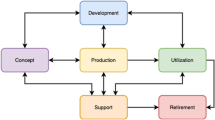Abstract
An approach aimed at creating test systems for complex hardware designs is proposed. The designs can be subdivided into modules and verified separately. The proposed architecture of separated verification systems and the way to combine them into a complex test system are based on simulation-based verification of hardware designs. Components of the test systems are connected in a TLM-like way (i.e., with the use of a high-level commutation model based on messages), which simplifies merging of several test systems into a test system for the entire complex component.
Similar content being viewed by others
References
IEEE 1364-2005, Verilog Standard.
Bergeron, J., Writing Testbenches: Functional Verification of HDL Models, Kluwer, 2003.
Tool Called Formality by Synopsys, http://www.synop-sys.com/Tools/Verification/FormalEquivalence/Pages/Formality.aspx).
Chupilko, M. and Kamkin, A., A TLM-based Approach to Functional Verification of Hardware Components at Different Abstraction Levels, 12th Latin-American Test Workshop, 2011.
Clarke, E., Grumberg, O., and Peled, D., Model Checking, MIT Press, 1999.
Kneuper, R., Limits of Formal Methods, Formal Aspects Computing, 1997, vol. 3, pp. 1–000.
Iman, S., Step-by-Step Functional Verification with SystemVerilog and OVM, Hansen Brown, 2008.
Ivannikov, V.P., Kamkin, A.S., Kuliamin, V.V., and Petrenko, A.K., Application of the UniTESK Technology to Functional Verification of Hardware Models, Preprint of Inst. of System Programming, Russ. Acad. Sci., Moscow, 2005, no. 8 (in Russian). http://citfo-rum.ru/SE/testing/unitesk_hard/, 2006.
Open Verification Methodology, http://www.ovmworld.org.
Kamkin, A.S. and Chupilko, M.M., Survey of Modern Technologies of Simulation-Based Verification of Hardware, Programming Comput. Software, 2011, vol. 37,no. 3, pp. 147–152.
A. Barantsev et al., UniTesK Approach to Test Development: Achievements and Prospects, Proc. of Inst. of System Programming, Russ. Acad. Sci., 2004, vol. 5., pp. 121–156. http://citforum.ru/SE/testing/unitesk/, 2004.
Bourdonov, I.B., Kossatchev, A.S., and Kuliamin, V.V., Irredundant Algorithms for Traversing Directed Graphs: The Nondeterministic Case, Programming Comput. Software, 2004, vol. 30, no. 1, pp. 2–17.
Demakov, A., Kamkin, A., and Sortov, A., High-Performance Testing: Parallelizing Functional Tests for Computer Systems Using Distributed Graph Exploration, Proc. of Conf. Cloud Computation. Education. Research. Developments, 2011.
Author information
Authors and Affiliations
Corresponding author
Additional information
Original Russian Text © M.M. Chupilko, 2012, published in Programmirovanie, 2012, Vol. 38, No. 1.
Rights and permissions
About this article
Cite this article
Chupilko, M.M. Developing test systems for multi-modules hardware designs. Program Comput Soft 38, 34–42 (2012). https://doi.org/10.1134/S036176881201001X
Received:
Published:
Issue Date:
DOI: https://doi.org/10.1134/S036176881201001X




